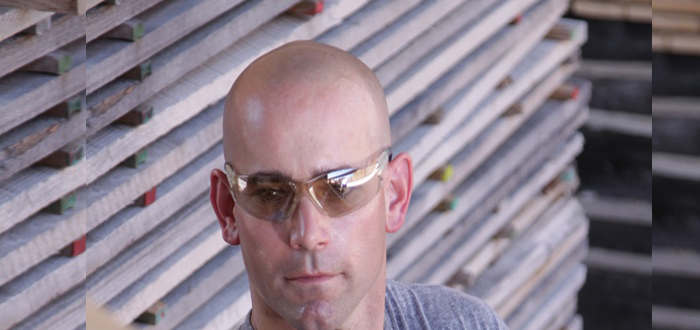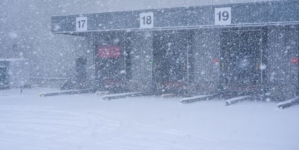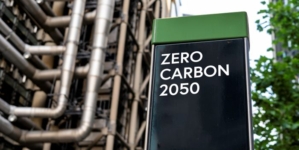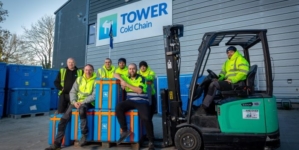-
Nutrivend selects Forterro’s Orderwise to support online expansion and streamline operations - April 11, 2025
-
ARROWXL LAUNCHES AMBITIOUS ZERO WASTE ROADMAP - April 8, 2025
-
THE BCMPA’S NEW CAMPAIGN DRIVES OUTSOURCING SUCCESS IN Q1 - April 7, 2025
-
BLACKOUT TECHNOLOGIES TARGETS TELEMATICS-INTEGRATED MOBILE DEVICE BLOCKING TO COMBAT SMARTPHONE DISTRACTION - April 1, 2025
-
Sparck Technologies awarded Royal designation - March 27, 2025
-
OpenADR Alliance announces first OpenADR 3.0 certified products with EVoke Systems, E.ON Energy and Universal Devices - March 25, 2025
-
Growing fulfilment and contract packer appoints new Managing Director - March 25, 2025
-
When is it time to invest in a WMS? Understanding the key trigger points - March 25, 2025
-
eCapital helps Vantage Recruitment on its journey to financial success - March 24, 2025
-
Hugo Beck Celebrates 70 Years of Packaging Innovation with Open House Events - March 20, 2025
Common complaints – how to improve safety eyewear compliance.
afety eyewear is compulsory for a wide-range of sectors, but poorly specified glasses can cause the user discomfort and ultimately lead to non-compliance, despite the vital role safety eyewear plays. Here, Sangeeta Aeri, Technical Manager at Supertouch explores the common complaints around safety eyewear and identifies key considerations to help improve compliance.
Eye strain, fatigue and pain are just some of the complaints employees make about safety eyewear, all of which can be mitigated against if the right eyewear is selected. When it comes to safety eyewear, a ‘one size suits all’ approach is a common issue, however the result of doing so can be dangerous. Unsuitable eyewear can not only cause eye irritation or injury, it can also lead to a general lack of confidence in PPE from workers, and in turn a lack of compliance.
Given the fact that safety eyewear has evolved over the years, with a vast array of styles to suit a wide range of needs, there is greater ability to provide employees with a comfortable, durable and stylish set of glasses – that also deliver unrivalled protection for the wearer.
One area of concern is eye strain, as it can cause employees unwanted stress, lead to migraines and distraction, and this could have disastrous consequences – particularly in roles where concentration is paramount. Eye strain can be relieved by sourcing glasses with quality scratch resistance. If safety eyewear has poor scratch resistance this will impair the users vision and the muscles in the eyes will have to work harder to be able to see through the lens. Nowadays, most safety spectacle lenses have an anti-scratch coating. We would always recommend specifying high quality coatings, as these help to prolong the life of the spectacle and ultimately help prevent non-compliance.
For those working outdoors, protection against UV rays is another important factor to consider as the sun can have a serious impact on eyes too. Grey or silver mirrored lenses will reduce the glare of bright sunlight, or for applications where workers are frequently moving from internal to external settings, an Indoor and Outdoor (I/O) lens may be more appropriate. Alternatively, where there are continuous low levels of light, amber lenses will help by enhancing the contrast. For individuals exposed to high humidity working conditions or moving between hot and cold environments, anti-fog coatings are considered essential.
Eyewear users may also complain of fatigue. This not only effects the individual but it can also impact an organisation as well. Overtired workers are less productive and are more frequently involved in avoidable accidents. One way this can be lessened is through the use of quality panoramic eyewear which provides an unlimited field of vision, such as Pyramex Ever-Lite. High tech coatings can also improve vision, enabling employees to work for longer periods without loss of concentration.
Last but not least, comfort is an essential element for any eyewear user – it can help to prevent all of the above and more. Uncomfortable eyewear is not only less likely to be worn, creating a real threat to health and safety, but can once again reduce productivity as workers are driven to distraction by pain and irritation. The weight, finish and fit of the safety eyewear are therefore key. Softer materials around the nose and temples allow the safety eyewear to mould to the wearer’s unique face shape and help to reduce pressure on the side of the head. Co-moulded temple designs in conjunction with low weight ensures the eyewear grips the side of the head and does not fall off even with excessive head movement.
If employees are suffering from discomfort, pain or fatigue due to safety eyewear, it is very likely that compliance and safety will be compromised as a result. With so much choice and variety on the market, it’s never been a better time to understand the differentiating factors that can affect safety eyewear compliance and help to mitigate against it.
































